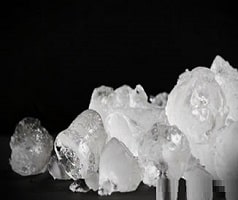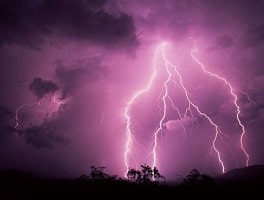Examples of Hydraulic Energy
We explain that what are the examples of hydraulic energy? The hydraulic energy is that which is contained in the motion of the water . It is the kinetic energy that travels in this liquid, and when it hits an obstacle or moving part, it is converted into mechanical energy. With hydraulic energy it is possible to produce mechanical work . Large bodies of water, such as seas and rivers, have this great capacity.
Hydraulic energy is used above all in hydroelectric plants, which are industrial facilities in charge of generating electricity to supply a city. This type of energy is a substitute for burning fossil fuels, which is why it is classified as alternative energy .
History of hydropower
Water is considered an inexhaustible resource because it is continually renewed thanks to its biogeochemical cycle. It evaporates in rivers and seas, concentrates in the atmosphere and falls in the form of rain on the earth’s crust, to be transformed again in that order. The Greeks and Romans already harnessed the energy of water, and used water wheels to grind cereals.
During the Middle Ages, a power of 35 KiloWatts was generated with the large wooden water wheels. With the passage of time, the mechanisms in question of their designs and the materials with which they were manufactured were perfected. However, this did not mean such a considerable improvement in terms of energy used.
The electricity obtained from hydropower is called hydroelectric power . This was fully developed thanks to two engineers: the British John Smeaton , who built huge iron water wheels, and the French Poncelet, who introduced curved vanes in the 19th century.
It was during the Industrial Revolution that the turbine was developed , which is a component in the form of a hollow cylinder with blades on its perimeter, which receive the mechanical energy from the water to communicate it to other parts of the system. The hydroelectricity was a great option compared to steam engines , working wood and coal burning, fuel unsatisfactory for its heating value and scarcity, respectively.
It was in the 20th century that the technology for hydroelectric power plants began to be established. These have since been a great source of electrical energy free from burning fuels. The first power plant built in the world was that of Northumberland, Great Britain, in 1880.
Types of hydroelectric plants
The flow (volumetric flow) of water currents varies according to the seasons of the year. For this reason, hydroelectric plants usually generate electricity thanks to a large reservoir of water contained by a dam. However, there are also some plants that operate based on the natural fall of the water, when the flow is uniform. These facilities are called “ flowing water ”.
The types of hydroelectric plants are:
- Low pressure
- Medium pressure
- High pressure
The hydro low pressure are those located in uneven currents of 10 meters or more; they are built in rivers and the water is dammed by means of dams.
The hydroelectric medium or high pressure also known as accumulation or pumping are those slopes up to 100 meters. The water accumulates in large reservoirs or entire areas of rivers.
- The accumulation tanks store water for short periods (daily accumulation) or long periods (annual accumulation); Most are built on dams in valleys and take advantage of the water from renewable natural courses.
- The pump , when there is need to generate, force water to a high level to reuse its potential energy (energy that depends on the height or position). These plants in particular, by requiring pumping systems, consume electricity, so they are not considered renewable or sustainable.
To build a hydroelectric plant, tasks that modify the environment have to be carried out, so an Environmental Impact Assessment must first be carried out. In this way, the project will be classified as safe or risky for that environment. Environmental legislation is used, such as the General Law of Ecological Balance and Environmental Protection, corresponding to Mexico.
Examples of Hydraulic Energy
- When the water contained by a dam is released, hydraulic energy is presented, which is the combination of the kinetic and potential energies of the liquid.
- On a small scale: a paper boat is placed in a sink filled with water. The sink is drained, and when the level is about to reach the bottom, a vortex is formed that makes the boat turn. This turn is caused by hydraulic energy.
- During a tsunami, the movement of tectonic plates imparts gigantic mechanical energy to the water. The hydraulic energy in the waves is capable of knocking down fishing boats that pass between them.
- In the Middle Ages, hydraulic power was used in large wheels that crushed cereals.
- Hydraulic energy is one of the alternative energies that help us obtain electricity for our day to day.
- In natural water courses, such as rivers, hydraulic energy dissipates in eddies, soil erosion, shocks and the removal of material from loose rocks.
- To extract hydraulic energy without so many losses, humanity has built artificial channels where water can flow. It can be concrete channels, as uniform as possible that eliminate a good portion of friction.
- In hydroelectric power plants the water, after being retained, is conducted through tunnels and high pressure pipes to lower ground. When it reaches the generating plant, the water already carries a huge amount of energy.
- The main advantage of hydroelectric plants is that: by taking advantage of hydraulic energy, they do not need to burn fuel.
- Hydraulic power is clean, because it can be harnessed without polluting the air or water, and mechanical work can be produced at room temperature.
- In hydroelectric power plants, hydropower is so noble that maintenance and extraction costs are very low.
- A point in favor for hydroelectric plants is that the engineering works required to take advantage of hydraulic energy last a long time in good condition.


